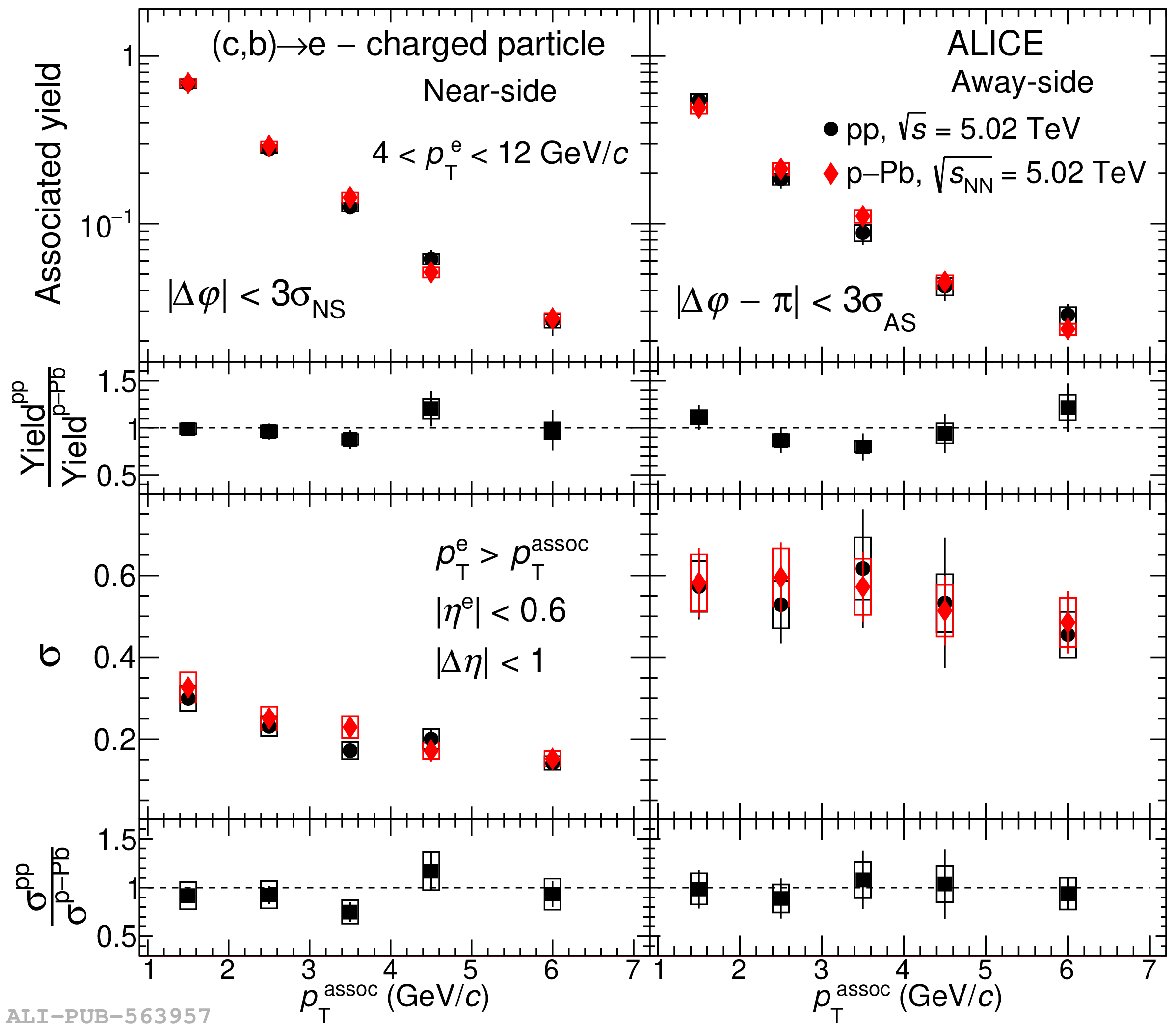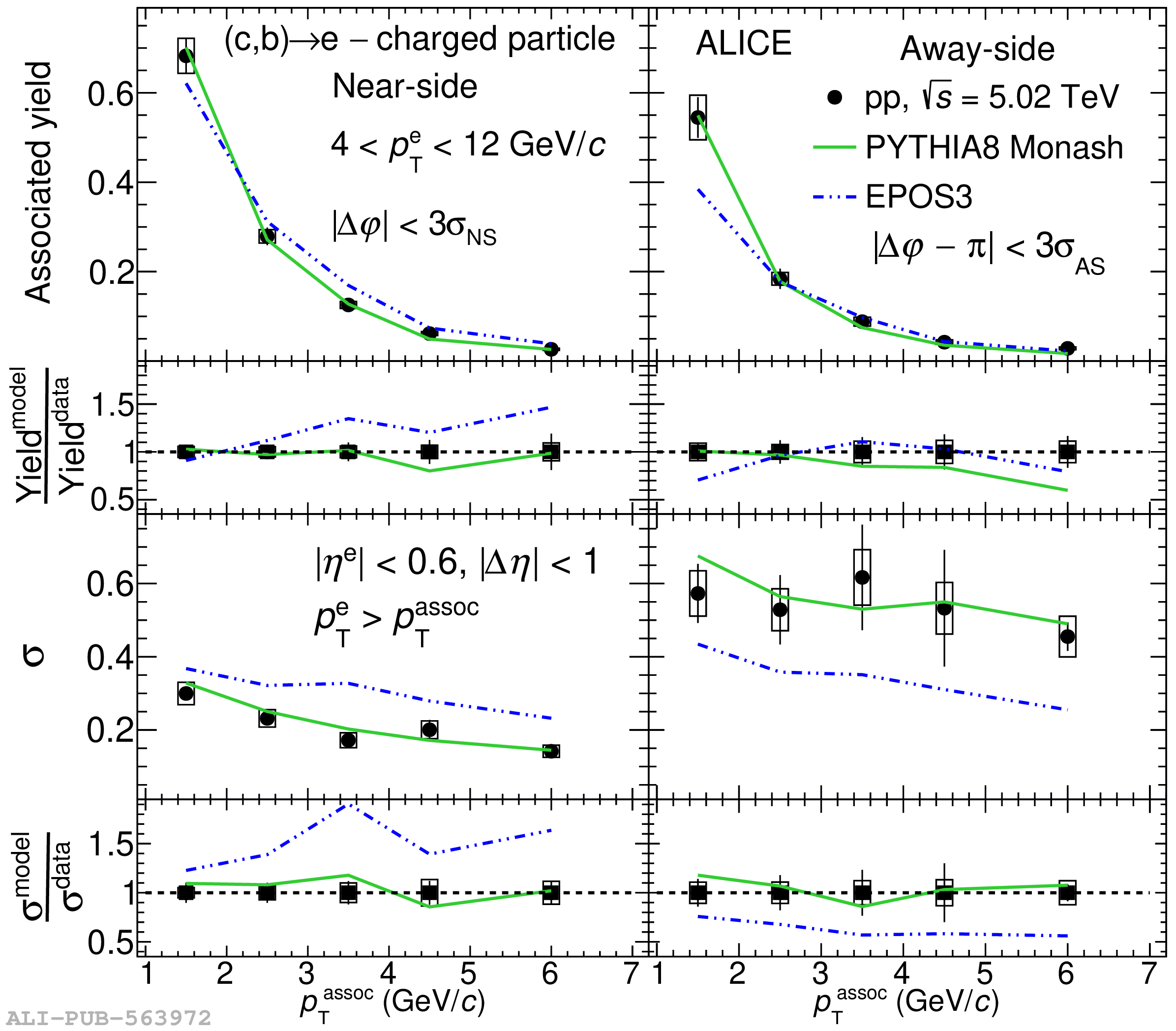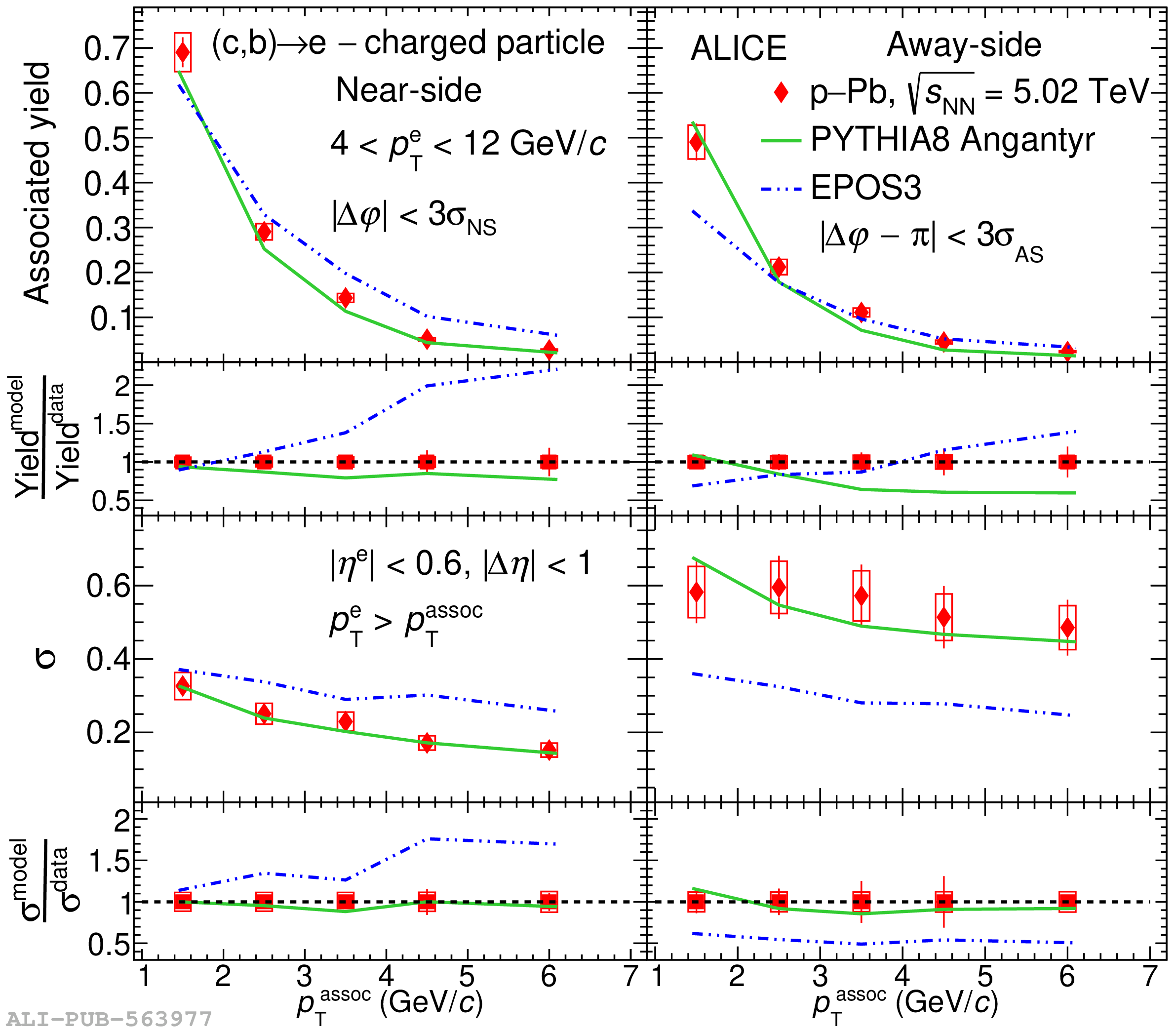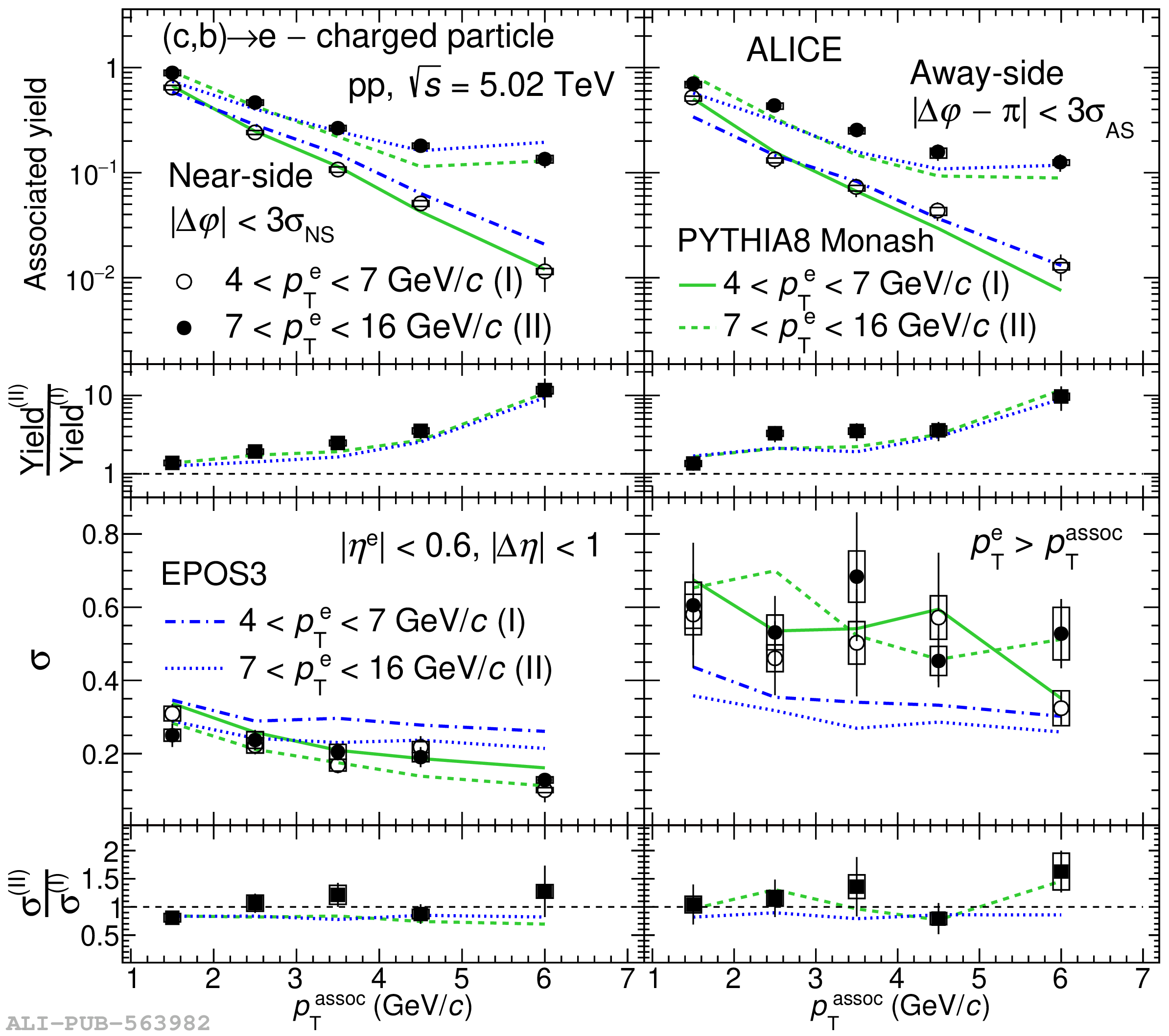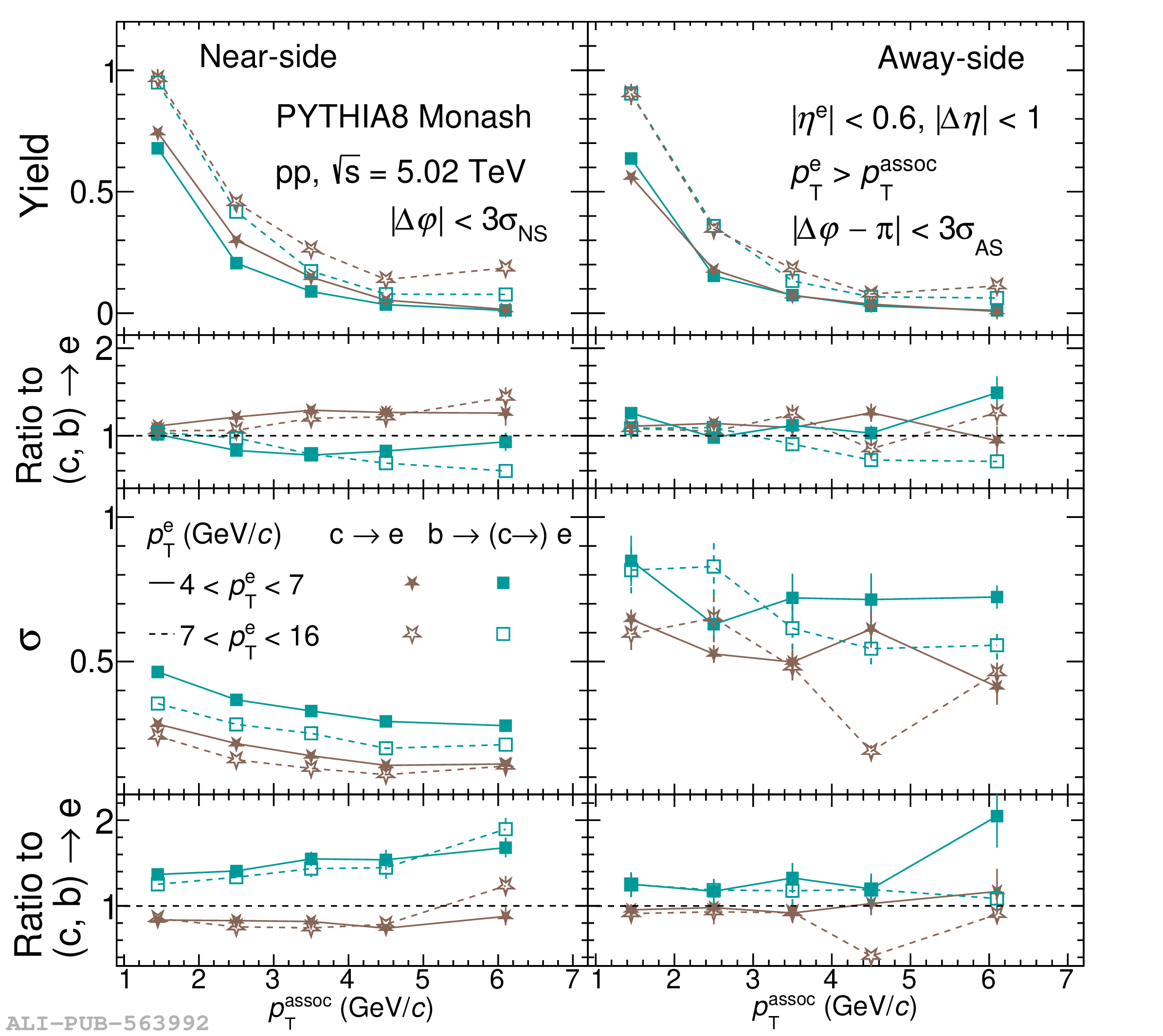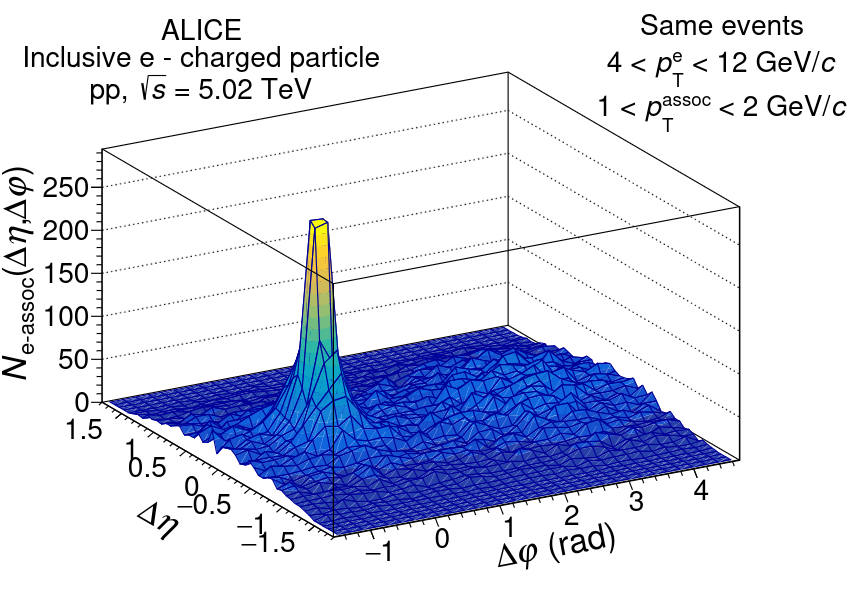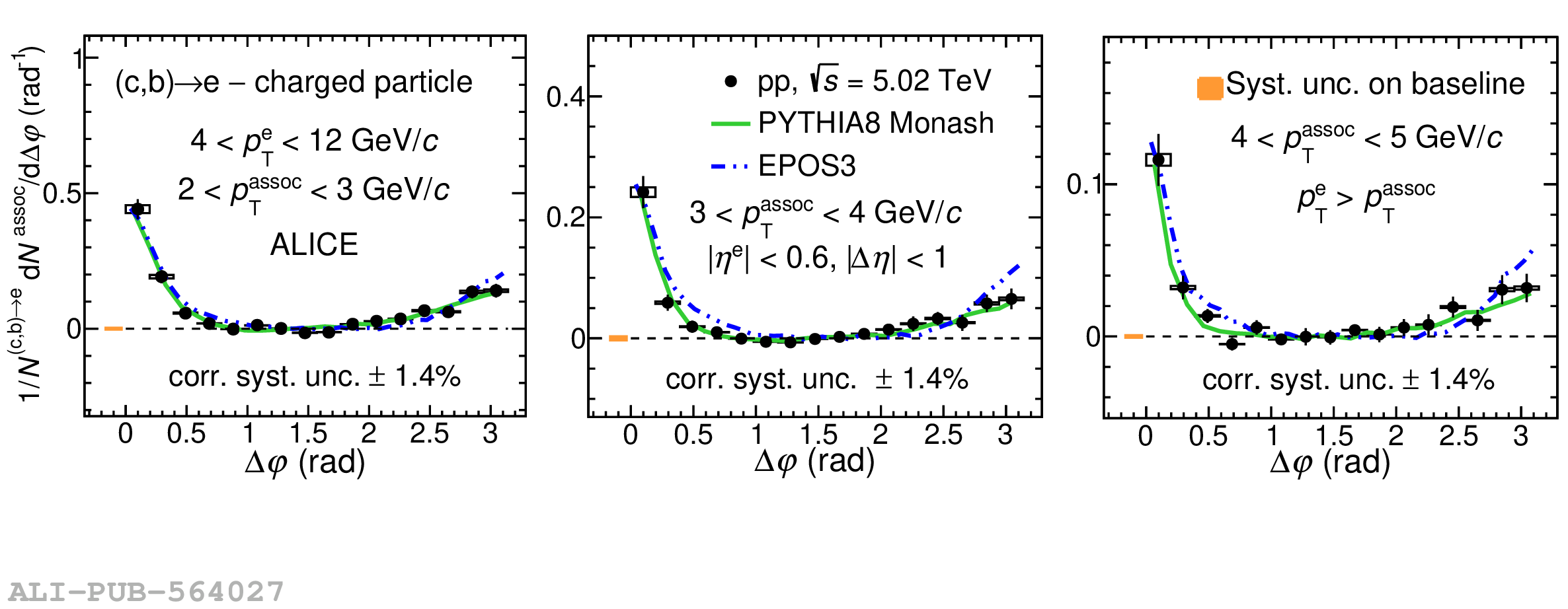The azimuthal ($\Delta\varphi$) correlation distributions between heavy-flavor decay electrons and associated charged particles are measured in pp and p$-$Pb collisions at $\sqrt{s_{\rm{NN}}} = 5.02$ TeV. Results are reported for electrons with transverse momentum $4<~p_{\rm T}<~16$ GeV/$c$ and pseudorapidity $|\eta|<~0.6$. The associated charged particles are selected with transverse momentum $1<~p_{\rm T}<~7$ GeV/$c$, and relative pseudorapidity separation with the leading electron $|\Delta\eta| <~ 1$. The correlation measurements are performed to study and characterize the fragmentation and hadronization of heavy quarks. The correlation structures are fitted with a constant and two von Mises functions to obtain the baseline and the near- and away-side peaks, respectively. The results from p$-$Pb collisions are compared with those from pp collisions to study the effects of cold nuclear matter. In the measured trigger electron and associated particle kinematic regions, the two collision systems give consistent results. The $\Delta\varphi$ distribution and the peak observables in pp and p$-$Pb collisions are compared with calculations from various Monte Carlo event generators.
Eur. Phys. J. C 83 (2023) 741
HEP Data
e-Print: arXiv:2303.00591 | PDF | inSPIRE
CERN-EP-2023-024
Figure group



